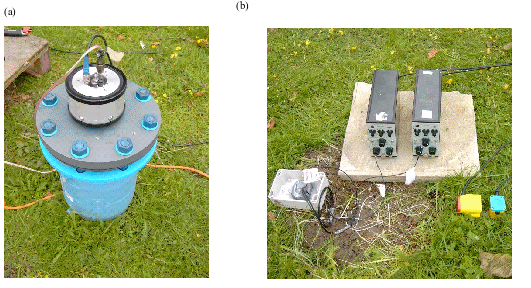Buried pipelines are central to modern life and form an important part of many engineering structures for transporting fluids and gases. Pipe location is a subject of increasing concern in China and across the world due to ever increasing congestion in our underground space, combined with the need to continually maintain, repair and replace assets within that space.
Based on a wave propagation model developed recently, researcher GAO Yan from the Institute of Acoustics of the Chinese Academy of Sciences together with researchers from China and the UK present a novel method for locating buried pipes using measurements of ground surface vibrations.
It is becoming apparent that utility maps often contain inaccurate data and, moreover, are invariably incomplete. With this in mind, a general urban survey is currently underway in China to gather the first authentically recorded location information about existing pipes laid underground. In other countries too, considerable effort is underway to rectify these issues.
The axisymmetric fluid-borne (s = 1) wave has been exploited with varying degrees of success in practical surveys for determining the location of buried pipes. Difficulties are sometimes encountered in interpreting ground surface vibration data, whilst attempting to locate the pipes, due to the occurrence of abrupt changes in the phase response over the usable frequency range.
On the basis of a model of axisymmetric wave propagation established in recent work, the ground surface displacements due to waves radiating from a buried fluid-filled pipe have been investigated. An analytical model is adopted to derive general expressions for the horizontal and vertical displacements at the ground surface.
Two representative soils have been specifically considered, where the s = 1 wave in the pipe will leak shear waves into the soil, but may or may not leak compressional waves. In each of these cases, numerical simulations have been presented for predicting the ground surface displacements.
The model is used to demonstrate how, when both compressional and shear waves are radiated, they can interfere such that abrupt phase changes occur at the frequencies coincident with magnitude minima in the ground surface displacements. When only shear waves are radiated, such interference does not occur.
Furthermore, for sandy soil, it is found that the horizontal displacement is dominated by the radiated shear wavenumber component whereas the vertical displacement is controlled by the radiated compressional wavenumber component.
Using the analytical model, theoretical predictions of ground surface displacements are compared with experimental data from a dedicated MDPE pipe rig as shown in Fig. 1. Although there are some differences between the measured and predicted response magnitudes at the ground surface, the general trends of the response have been replicated.
In particular, the phase response shows good agreement and the interference phenomena occur in both predictions and measurements. Where differences are observed, possible reasons for the discrepancies have been offered.
The theoretical model presented here underpins an acoustic technique for locating buried pipes described before. Moreover, it offers additional insights into how the technique might be improved such that additional information about the pipe, such as its depth, can be gleaned.

Fig.1 Measurement setup showing: (a) Shaker mounted on the plastic end-plate; (b) geophones and PVDF (polyvinylidene fluoride) wires (Image by GAO Yan et al.)
Reference:
GAO Yan, Jennifer M. Muggleton, LIU Yuyou, Emiliano Rustighi. An Analytical Model of Ground Surface Vibration Due to Axisymmetric Wave Motion in Buried Fluid-filled Pipes. Journal of Sound and Vibration (Volume 395, 12 May 2017, Pages 142–159). DOI: 10.1016/j.jsv.2017.02.022
Contact:
GAO Yan
Key Laboratory of Noise and Vibration Research, Institute of Acoustics, Chinese Academy of Sciences, 100190 Beijing, China
E-mail: gaoyan@mail.ioa.ac.cn


